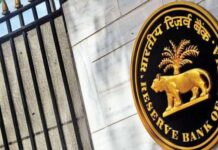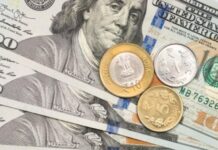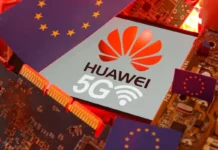The US and China published an initial trade contract on Wednesday that will move back some taxes and extend Chinese purchases of US goods and services, defusing an 18-month conflict between the world’s two biggest markets.
Beijing and Washington have described their “Phase 1” deal as a serious step after months of start-stop conversations punctuated by tit-for-tat tariffs that extracted supply chains and stoked concerns of a further slowdown in the global market.
The centerpiece of the agreement is a pledge by China to buy at least an extra $200 billion worth of U.S. farm commodities and other goods and services over two years, over a baseline of $186 billion in investments in 2017.
Liu stated the two sides will work more firmly to obtain real results and achieve a win-win connection despite differences in their state and economic rules, China’s official Xinhua news company reported.
US officials called the agreement a huge win that marked a notable shift in Washington’s connections with China but said it included a strong enforcement action that could trigger replaced tariffs if Beijing does not live up to its obligations.
The deal would cover $50 billion in extra orders for U.S. agricultural commodities, Trump said, adding he was sure that U.S. farmers would be able to meet the higher demand. He also said China would purchase $40 billion to $50 billion in extra U.S. services, $75 billion more in producing goods, and $50 billion more worth of power supplies.
Officials from both nations have touted the deal as leading in a new era for U.S.-Sino relations, but it neglects to address many of the fundamental differences that drove the Trump administration to begin the trade war in the first place.
They incorporate Beijing’s long-standing tradition of propping up state-owned firms and flooding international businesses with low-priced goods. Trump, who has adopted an “America First” policy directed at rebalancing global trade in support of U.S. companies and workers, said China had promised action to confront the difficulty of pirated or forged goods, and that the deal involved strong protection of rational property rights.
Not everyone praised the deal, with Senate Minority Leader Chuck Schumer showing uncertainty. Disappointing to many, the contract includes no discounts on tariffs beyond those made in December. Last month, the United States did not move ahead with proposed tariffs to be imposed under the jurisdiction of Section 301 of the Trade Act of 1974 as a remedy for the theft of U.S. intellectual property. Moreover, the power cut in half 301 tariffs previously placed on certain Chinese goods. Furthermore, China did not go forward with extra tariffs of its own that month.
Charting the Trade War
Britain’s retreat from the European Union doesn’t just end its connection with the alliance, but also with nations with which the EU has trade deals. The U.K. government has already gone over 20 deals, and is in discussions for another 19, though some are looking strange to be finished by exit day.
President Trump announces China deals an important victory for America, but at best it is a break. Moreover, it is a truce favoring China more than it originally appears. Beijing, before it inked the agreement, got what it really wanted.
It is not completely clear what the U.S. made in Phase One. Yes, there are promises, but China has made many commitments in the past only to break them later, sometimes with an exception. For example, it still has not complied with its commitments, included in its World Trade Organization accession protocol, to open its market to international payment processors by 2006.
There is, however, one thing Trump has achieved with the Phase One deal. He has, in a practical sense, transformed the way Americans think about China. For decades, Washington policymakers thought they did not, on the scale, have an advantage over Beijing. Now, after two years of Trump’s bad tactics, they know they do indeed contain high cards.
The wickedness of the Phase One agreement, therefore, is that Trump, holding great power over China, could have held American interests further and made a better deal.
Beijing and Washington have described their “Phase 1” agreement as an important step after months of start-stop conversations punctuated by tit-for-tat tariffs that extracted supply chains and stoked concerns of a further slowdown in the global market.
They have had a better opportunity this time. So far, there is an agreement in place, but closely observed apart from the details officials chose to deliver. Top moderators from the two teams had dinner together Tuesday night, according to a news release. In a few hours, on Wednesday, they will reach out and make records.
Coming Up
- Jan. 17: Singapore shipping, Italy trade excess
- Jan. 20: Taiwan export commands
- Jan. 21: South Korea 20-day shipping
- Jan. 23: Japan tradings
- Jan. 21-24: Business and management leaders meet at the World Economic Forum’s yearly meeting.















































